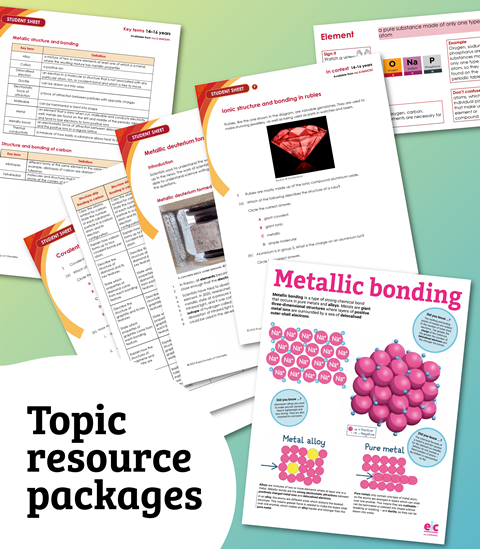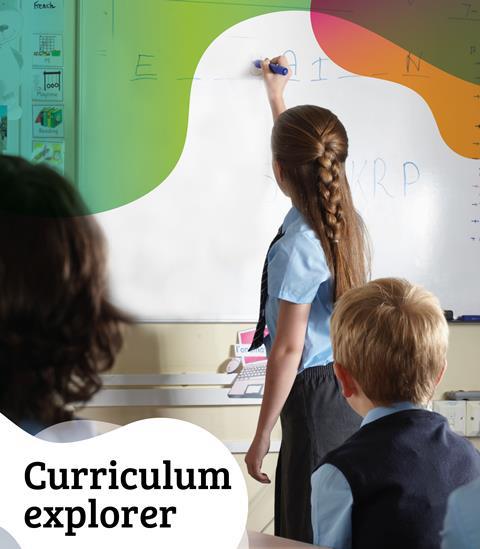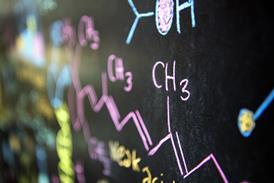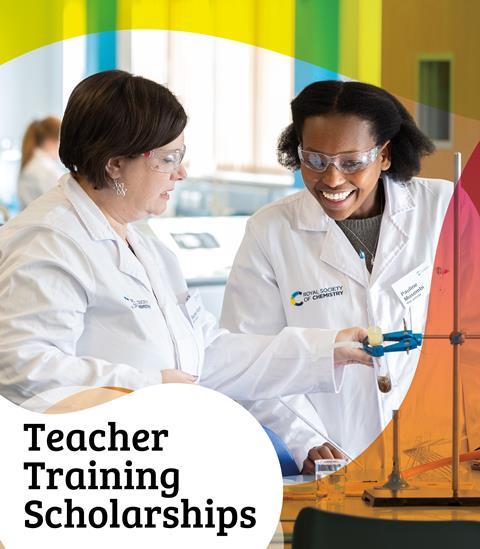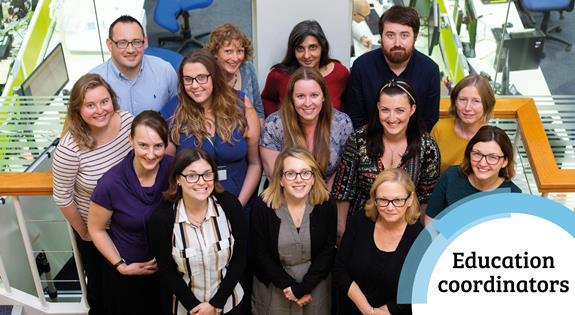All RSC Education articles in Non-EiC content – Page 101
-
 Resource
ResourceAtmospheric chemistry by danceroom Spectroscopy (dS)
A series of short videos presented by Dr David Glowacki within an interactive dome called danceroom Spectroscopy (dS).
-
 Resource
ResourceOn This Day – Sep 22 : Michael Faraday born
He was one of the most influential men in the history of science. He helped formulate the concept of a magnetic field by experimenting with magnets and electrical wires. The amount of electrical charge in one mole of electrons is called a ‘Faraday’ in honour of his achievements.
-
 Resource
ResourceOn This Day - Apr 01 : Ferdinand Brickwedde died
He co-discovered deuterium (2H), which is an isotope or “heavy form” of hydrogen, with Harold Urey and George Murphy. They produced the first measurable samples of deuterium from liquefied hydrogen.
-
 Resource
ResourceThermodynamic calculations and sherbet lemons | Chemistry Olympiad worked answers
Try this worked example of a Chemistry Olympiad question, investigating properties of ingredients in sherbet lemons. Includes video walkthrough and transcript.
-
 Resource
ResourceOn This Day – Aug 22 : Patent for liquid soap
The product was made by dissolving one pound of solid soap in water, and then adding 100 pounds of ammonia until the liquid thickened to the consistency of molasses, the thick by-product when producing sugar.
-
 Resource
ResourceChemistry of fireworks
Reverend Ron Lancaster MBE showcases how chemistry is involved in making fireworks with some fantastic demonstrations. Warning: These demonstrations have been tailored for this lecture. If you are to perform similar experiments in your laboratory, please make sure you carry out a full risk assessment. Video: Chemistry of ...
-
 Resource
ResourceSolar technology
Find out about the kind of solar cells we use and how they are made with videos from The Solar Spark at the University of Edinburgh.
-
 Resource
ResourceFree Range Chemistry: Part 4
Short videos of exciting demonstrations of the chemistry of everyday materials, taken from a lecture by Peter Wothers at the University of Cambridge. Video: Free Range Chemistry: 32 - Saltpetre (Potassium Nitrate) Video: Free Range Chemistry: 33 - Saltpetre and Paper ...
-
 Resource
ResourceFree Range Chemistry: Part 3
Short videos of exciting demonstrations of the chemistry of everyday materials, taken from a lecture by Peter Wothers at the University of Cambridge. Video: Free Range Chemistry: 24 - Limestone Video: Free Range Chemistry: 25 - Shells Video: Free Range ...
-
 Resource
ResourceFree Range Chemistry: Part 2
Short videos of exciting demonstrations of the chemistry of everyday materials, taken from a lecture by Peter Wothers at the University of Cambridge. Video: Free Range Chemistry: 13 - Making Ammonia Video: Free Range Chemistry: 14 - First Sources of Ammonia ...
-
 Resource
ResourceFree Range Chemistry: Part 1
Short videos of exciting demonstrations of the chemistry of everyday materials, taken from a lecture by Peter Wothers at the University of Cambridge. Video: Free Range Chemistry: 01 - Everything is Chemical Video: Free Range Chemistry: 02 - Coffee - Delicious Chemicals ...
-
 Resource
ResourceChemTube3D: Polymers
This section provides an interactive 3D experience with many different polymers and demonstrates the key features of each one.
-
 Resource
ResourceChemTube3D: Solid State
This website provides an interactive 3D experience with solid state structures and demonstrates the key features of each.
-
 Resource
ResourceTeacher’s resource: UV / Visible Spectroscopy
UV-visible spectroscopy is a technique that readily allows one to determine the concentrations of substances and therefore enables scientists to study the rates of reactions, and determine rate equations for reactions, from which a mechanism can be proposed. As such UV spectroscopy is used extensively in teaching, research and analytical ...
-
 Resource
ResourceIR teacher resources: Infrared spectroscopy
One of the first scientists to observe infrared radiation was William Herschel in the early 19th century. He noticed that when he attempted to record the temperature of each colour in visible light, the area just beyond red light gave a marked increase in temperature compared to the visible colours. ...
-
 Resource
ResourceStudents’ resource: UV / Visible spectroscopy
UV-visible spectroscopy is a technique that readily allows one to determine the concentrations of substances and therefore enables scientists to study the rates of reactions, and determine rate equations for reactions, from which a mechanism can be proposed. As such UV spectroscopy is used extensively in teaching, research and analytical ...
-
 Resource
ResourceSpectroscopy introduction
Spectroscopy is the study of the way light (electromagnetic radiation) and matter interact. There are a number of different types of spectroscopic techniques and the basic principle shared by all is to shine a beam of a particular electromagnetic radiation on to a sample and observe how it responds to ...
-
 Resource
ResourceOn This Day - Jan 04 : Dow isolated bromine
This new method of electrolysis greatly simplified the process for isolating bromine (Br2). Dow became the founder of Dow Chemical Company and was a pivotal figure in developing America’s chemical industry.
-
 Resource
ResourceThe microscopic structure of gold leaf | Chemistry Olympiad worked answers
Try this worked example of a Chemistry Olympiad question on the crystalline structure of gold and its unit cell. Includes video walkthrough and transcript.
-
 Resource
ResourceWriting ‘explosive’ equations | Chemistry Olympiad worked answers
Practise writing equations in the context of explosives in this worked example of a Chemistry Olympiad question. Includes video walkthrough and transcript.




